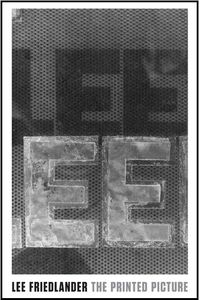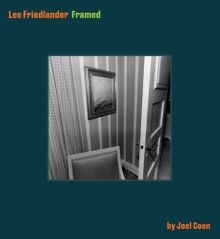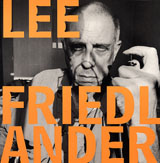PHOTOGRAPHY MONOGRAPHS
|
|
STATUS: Out of stock Temporarily out of stock pending additional inventory. |
 Lee Friedlander: Real Estate
Lee Friedlander: Real Estate
Published by Eakins Press Foundation.
Afterword by Peter Kayafas.
This volume presents 155 photographs spanning 60 years of the artist’s exploration of the built environment in the American social landscape. Collectively these photographs add to one of the broadest and most nuanced visual explorations of America, and, individually, they are filled with the kind of intellectual humor and observation for which Friedlander has become celebrated. Along the way, of course, Friedlander has expanded our ideas of what constitutes real estate, just as he continues to compel us to reconsider how photography reveals essential aspects of our lives over time. The mirror that Lee Friedlander holds up to us is his mirror and everything reflected in it has the common traits of his way of seeing—each picture is definitively a Friedlander picture.
Real Estate is an essential collection of one of Friedlander’s lifelong subjects, and takes its place alongside other classic titles of his quest to photograph the ever-changing social landscape: The People’s Pictures (2021), Signs (2019), The American Monument (1976/2017), Letters from the People (1993) and American Musicians (2001).
PUBLISHER
Eakins Press Foundation
BOOK FORMAT
Hardcover, 11.25 x 12.5 in. / 168 pgs / 155 tritone.
PUBLISHING STATUS
Pub Date 10/24/2023
Active
DISTRIBUTION
D.A.P. Exclusive
Catalog: FALL 2023 p. 52
PRODUCT DETAILS
ISBN 9780871300959 TRADE
List Price: $65.00 CAD $94.00 GBP £57.00
AVAILABILITY
Out of stock
STATUS: Out of stock Temporarily out of stock pending additional inventory. |
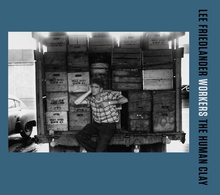 Lee Friedlander: Workers
Lee Friedlander: Workers
The Human Clay
Published by Steidl.
In the capstone volume of his epic series The Human Clay, Lee Friedlander (born 1934) has created an ode to people who work. Drawn from his incomparable archive are photographs of individuals laboring on the street and on stage, as well as in the field, in factories and in fluorescent-lit offices. Performers, salespeople and athletes alike are observed both in action and at rest by Friedlander's uncanny eye. Opera singers are caught mid-aria, models primp backstage, mechanics tinker and telemarketers hustle.
Spanning six decades, this humanizing compilation features over 250 photographs, many appearing here for the first time in print.
PUBLISHER
Steidl
BOOK FORMAT
Clth, 11 x 9.5 in. / 200 pgs / 253 bw.
PUBLISHING STATUS
Pub Date 9/19/2023
Active
DISTRIBUTION
D.A.P. Exclusive
Catalog: FALL 2018 p. 115
PRODUCT DETAILS
ISBN 9783958295001 TRADE
List Price: $60.00 CAD $87.00
AVAILABILITY
In stock
in stock $60.00 Free Shipping UPS GROUND IN THE CONTINENTAL U.S. |
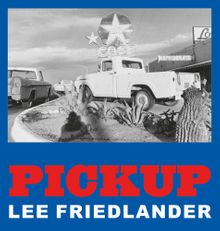 Lee Friedlander: Pickup
Lee Friedlander: Pickup
Published by Steidl.
In this compendium, Lee Friedlander (born 1934) examines the ordinary pickup truck, a quintessentially American mode of transportation. Unadorned in form as well as function, pickups have long been the vehicle of choice for farmers and tradespeople. Their well-worn beds—usually open to the elements, laid bare for all to see—have held and hauled all manner of things, from spare tires and jumbles of wires to animals and the occasional person.
Friedlander, in his witty and encompassing, clear-eyed idiom, has observed this most utilitarian and unapologetically personal object in its native setting: the cacophonous bricolage that is the American social landscape.
PUBLISHER
Steidl
BOOK FORMAT
Clth, 11.5 x 12.25 in. / 88 pgs / 75 bw.
PUBLISHING STATUS
Pub Date 9/19/2023
Active
DISTRIBUTION
D.A.P. Exclusive
Catalog: FALL 2018 p. 115
PRODUCT DETAILS
ISBN 9783958295018 TRADE
List Price: $60.00 CAD $87.00
AVAILABILITY
In stock
in stock $60.00 Free Shipping UPS GROUND IN THE CONTINENTAL U.S. |
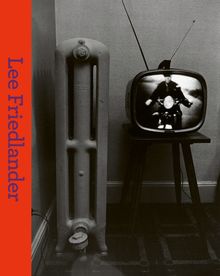 Lee Friedlander
Lee Friedlander
Published by RM/Fundación Mapfre.
Text by Carlos Gollonet, Nicholas Nixon, Jeffrey Fraenkel, Maria Friedlander, Giancarlo T. Roma.
One of the masters of contemporary photography, Lee Friedlander has dedicated his career to the documentation of everyday life in the United States. His images are characterized by a composition that utilizes the urban geometry of storefronts and street signs—and later car windows and telephone poles—as a framing technique. This catalog, published in conjunction with a retrospective organized by the Fundación MAPFRE in Madrid, surveys the wide scope of Friedlander’s career from the 1960s to today. High-quality reproductions of all of the exhibited works are supplemented by text written by curator Carlos Gollonet and photographer Nicholas Nixon.
The volume serves as a comprehensive guide to Friedlander’s body of work, with personal insight provided through an interview between Maria Friedlander and gallery director Jeffrey Fraenkel, as well as a chronology of the artist’s life by his grandson Giancarlo T. Roma.
Lee Friedlander was born in Aberdeen, Washington, in 1934, and studied photography at the Art Center College of Design in Pasadena, California. In 1956 he moved to New York City, which quickly became both the setting and subject of the majority of his work. Friedlander was represented alongside Diane Arbus and Garry Winogrand in the 1967 New Documents exhibition at the Museum of Modern Art, now understood as a landmark event in American documentary photography. Friedlander still lives and works in New York, and is represented by the Fraenkel Gallery.
PUBLISHER
RM/Fundación Mapfre
BOOK FORMAT
Hardcover, 9.5 x 11.75 in. / 384 pgs / 10 color / 340 bw.
PUBLISHING STATUS
Pub Date 2/2/2021
Active
DISTRIBUTION
D.A.P. Exclusive
Catalog: SPRING 2021 p. 83
PRODUCT DETAILS
ISBN 9788417975449 FLAT40
List Price: $75.00 CAD $105.00
AVAILABILITY
Out of stock
STATUS: Out of stock Temporarily out of stock pending additional inventory. |
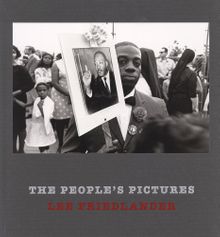 Lee Friedlander: The People's Pictures
Lee Friedlander: The People's Pictures
Published by Eakins Press Foundation.
The saturation of our social landscape by photographs and photographers is apparent from any public point of view. Photography is arguably the most democratic of mediums, even more accessible today across culture and class than language. In some regards, this has been Lee Friedlander’s most enduring subject—the way that average citizens interact with the world by making pictures of it, as well as how those pictures and the pictures constructed for advertising or political purposes define the public space.
In Lee Friedlander: The People’s Pictures we see photographs spanning six decades, most of the geographic United States and parts of Western Europe and Asia. These pictures are uniquely Friedlander photographs: as much about what’s in front of the camera as they are about the photographer’s lifelong redefining of the medium. Like his exploration of words, letters and numbers in the social landscape, these photographs of photography’s street presence seem inevitable to Friedlander’s vast visual orchestration of what our society looks like. But make no mistake, Friedlander’s photographs are not objective documents; they are intentional, authored, playful, intelligent creations made through his unprecedented collaboration with time and place.
Lee Friedlander (born 1934) has published more than 50 monographs since 1969, and has exhibited extensively around the world for the past five decades, including a major retrospective at the Museum of Modern Art, New York, in 2005. Friedlander lives in New York.
PUBLISHER
Eakins Press Foundation
BOOK FORMAT
Clth, 11.5 x 12 in. / 168 pgs / 147 duotone.
PUBLISHING STATUS
Pub Date 10/19/2021
Active
DISTRIBUTION
D.A.P. Exclusive
Catalog: FALL 2021 p. 25
PRODUCT DETAILS
ISBN 9780871300881 TRADE
List Price: $65.00 CAD $88.00 GBP £51.50
AVAILABILITY
In stock
in stock $65.00 Free Shipping UPS GROUND IN THE CONTINENTAL U.S. |
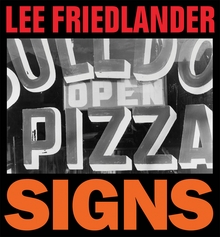 Lee Friedlander: Signs
Lee Friedlander: Signs
Published by Fraenkel Gallery.
For more than five decades, Lee Friedlander has repeatedly been drawn to the signs that inscribe the American landscape, from hand-lettered ads to storefront windows to massive billboards. Incorporating these markings with precision and sly humor, Friedlander’s photographs record a kind of found poetry of desire and commerce.
Focusing on one of the artist’s key motifs, Lee Friedlander: Signs presents a cacophony of wheat-paste posters, Coca-Cola ads, prices for milk, road signs, stop signs, neon lights, movie marquees and graffiti. The book collects 144 photographs made in New York and other places across the US, and features self-portraits, street photographs and work from series including The American Monument and America by Car, among others. Illegible or plainspoken, crude or whimsical, Friedlander’s signs are an unselfconscious portrait of modern life.
Lee Friedlander (born 1934) began photographing in 1948. Among his many monographs are Sticks and Stones, Self-Portrait, Letters from the People, Cherry Blossom Time in Japan and At Work, among others. His work was included in the influential 1967 exhibition New Documents at the Museum of Modern Art, New York, curated by John Szarkowski. Among the most important living photographers, Friedlander is in the collections of museums around the world.
PUBLISHER
Fraenkel Gallery
BOOK FORMAT
Hardcover, 11.75 x 12.5 in. / 120 pgs / 144 duotone.
PUBLISHING STATUS
Pub Date 5/21/2019
Active
DISTRIBUTION
D.A.P. Exclusive
Catalog: SPRING 2019 p. 73
PRODUCT DETAILS
ISBN 9781881337485 TRADE
List Price: $75.00 CAD $105.00 GBP £65.00
AVAILABILITY
In stock
in stock $75.00 Free Shipping UPS GROUND IN THE CONTINENTAL U.S. |
 Lee Friedlander: The Mind and the Hand
Lee Friedlander: The Mind and the Hand
Richard Benson, William Christenberry, William Eggleston, Walker Evans, John Szarkowski, Garry Winogrand
Published by Eakins Press Foundation.
Contributions by Richard Benson, William Christenberry, William Eggleston, Walker Evans, John Szarkowski, Garry Winogrand.
In the 1960s and '70s, Lee Friedlander (born 1934) developed his signature approach to documenting the American “social landscape”: deadpan, structurally complex black-and-white photographs of seemingly anything, anybody or anyplace that passed in front of his lens. But as he was making his name as a documentary photographer capturing the look and feel of modern American life, he was also photographing his closest friends, a practice he has continued throughout his long career.
A slipcased set of six paperback books, The Mind and the Hand presents the photographer’s intimate portraits of six of his best friends taken over the past five decades. The subjects, each presented in their own separate volume, comprise a veritable who's who of one of America's most fertile periods in photography: Richard Benson, William Christenberry, William Eggleston, Walker Evans, John Szarkowski and Garry Winogrand. Each volume begins with a relevant quote from its subject.
PUBLISHER
Eakins Press Foundation
BOOK FORMAT
Slip, pbk, 6 vols, 9 x 8.5 in. / 240 pgs / 191 duotone.
PUBLISHING STATUS
Pub Date 4/23/2019
Active
DISTRIBUTION
D.A.P. Exclusive
Catalog: SPRING 2019 p. 71
PRODUCT DETAILS
ISBN 9780871300799 TRADE
List Price: $90.00 CAD $125.00 GBP £80.00
AVAILABILITY
Out of stock
STATUS: Out of stock Temporarily out of stock pending additional inventory. |
 Arbus Friedlander Winogrand: New Documents, 1967
Arbus Friedlander Winogrand: New Documents, 1967
Published by The Museum of Modern Art, New York.
Edited with text by Sarah Hermanson Meister. Text by Max Kozloff.
In 1967, The Museum of Modern Art presented New Documents, a landmark exhibition organized by John Szarkowski that brought together a selection of works by three photographers whose individual achievements signaled the artistic potential for the medium in the 1960s and beyond: Diane Arbus, Lee Friedlander and Garry Winogrand.
Though largely unknown at the time, these three photographers are now universally acknowledged as artists of singular talent within the history of photography. The exhibition articulated a profound shift in the landscape of 20th-century photography, and interest in the exhibition has only continued to expand. Yet, until now, there has been no publication that captures its content.
Published in celebration of the 50th anniversary of the exhibition, Arbus Friedlander Winogrand features full-page reproductions of the 94 photographs included in the exhibition, along with Szarkowski’s original wall text, press release, installation views and an abundance of archival material. Essays by curator Sarah Hermanson Meister and critic Max Kozloff, who originally reviewed the exhibition for The Nation in 1967, critically situate the exhibition and its reception, and examine its lasting influence on the field of photography.
Sarah Hermanson Meister is Curator of the Department of Photography at The Museum of Modern Art, New York.
Max Kozloff is a New York-based writer and photographer.
Kristen Gaylord is Beaumont and Nancy Newhall Curatorial Fellow of the Department of Photography at The Museum of Modern Art, New York
PUBLISHER
The Museum of Modern Art, New York
BOOK FORMAT
Hardcover, 9 x 10.5 in. / 160 pgs / 125 duotone.
PUBLISHING STATUS
Pub Date 4/25/2017
Active
DISTRIBUTION
D.A.P. Exclusive
Catalog: SPRING 2017 p. 12
PRODUCT DETAILS
ISBN 9780870709555 TRADE
List Price: $45.00 CAD $60.00
AVAILABILITY
In stock
in stock $45.00 Free Shipping UPS GROUND IN THE CONTINENTAL U.S. |
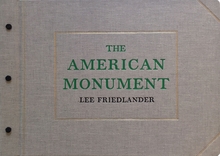 Lee Friedlander: The American Monument
Lee Friedlander: The American Monument
Published by Eakins Press Foundation.
Text by Peter Galassi, Leslie George Katz.
Originally published to great acclaim in 1976, The American Monument has become one of the most sought-after photography publications of the twentieth century. Long out of print, with only a rare few available on the secondary market, this second edition makes a treasure available once more to new audiences. Published in the same over-sized format as the first edition—with exquisite reproductions of 213 photographs—the album of post-bound single sheets can easily be temporarily disassembled for display.
Considered by many, including Friedlander himself, to be one of his most important books, The American Monument has influenced generations of photographers. The second edition includes a new essay by eminent photography curator and Friedlander scholar, Peter Galassi, which illuminates the history and continued significance of this publication.
This album by Lee Friedlander is a memorial in photographs to the American monument. The photographs were selected from several thousand negatives and more than a thousand prints the photographer made of the subject during a dozen years while traveling throughout the United States. The curator John Szarkowski stated: “I am still astonished and heartened by the deep affection of those pictures, by the photographer’s tolerant equanimity in the face of the facts, by the generosity of spirit, the freedom from pomposity and rhetoric. One might call this work an act of high artistic patriotism, an achievement that might help us reclaim that word from ideologues and expediters.”
PUBLISHER
Eakins Press Foundation
BOOK FORMAT
Hardcover, 17 x 12 in. / 182 pgs / 213 duotone.
PUBLISHING STATUS
Pub Date 9/6/2017
Active
DISTRIBUTION
D.A.P. Exclusive
Catalog: Publisher Backlist
PRODUCT DETAILS
ISBN 9780871300720 TRADE
List Price: $150.00 CAD $200.00 GBP £138.00
AVAILABILITY
Out of stock
STATUS: Out of stock Temporarily out of stock pending additional inventory. |
 Lee Friedlander: Chain Link
Lee Friedlander: Chain Link
Published by Steidl.
Erected to delineate space, form protective barriers and bring order to chaos, the fences in Friedlander’s pictures catch filaments of light, throw disconcerting shadows and visually interrupt scenes without fully occluding them. Sometimes the steel mesh seems as delicate as lace; at others it appears as tough as snakeskin. In this book’s 97 pictures, drawn from over four decades of work, it recurs as versatile, utilitarian and ubiquitous—not unlike the photographer himself.
Lee Friedlander was born in 1934 in Aberdeen, Washington. In 1948 he began to photograph seriously and by the 1960s had become widely recognized for his all-encompassing portrayals of the American social landscape—a term he coined. Friedlander’s influential work has been the subject of many seminal exhibitions, including New Documents and Mirrors and Windows, both organized by John Szarkowski at The Museum of Modern Art, and more than 50 books, including Self Portrait (1970), The American Monument (1976), Factory Valleys (1982), Sticks and Stones (2004) and America By Car (2010).
PUBLISHER
Steidl
BOOK FORMAT
Hardcover, 11.5 x 12.25 in. / 140 pgs / 97 bw.
PUBLISHING STATUS
Pub Date 11/21/2017
Active
DISTRIBUTION
D.A.P. Exclusive
Catalog: SPRING 2017 p. 123
PRODUCT DETAILS
ISBN 9783958292598 TRADE
List Price: $49.95 CAD $67.50
AVAILABILITY
In stock
in stock $49.95 Free Shipping UPS GROUND IN THE CONTINENTAL U.S. |
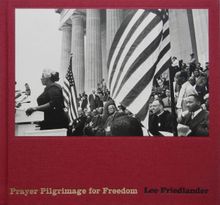 Lee Friedlander: Prayer Pilgrimage for Freedom
Lee Friedlander: Prayer Pilgrimage for Freedom
Published by Eakins Press Foundation.
Text by Martin Luther King, Jr., A. Philip Randolph, Roy Wilkins.
On May 17, 1957, through the generosity of Bayard Rustin, Lee Friedlander was given full access to photograph the participants of the Prayer Pilgrimage for Freedom in Washington, D.C. This extraordinary event, organized by Mr. Rustin, as well as A. Philip Randolph, Roy Wilkins and Dr. Martin Luther King, Jr., brought together many of the great thinkers and leaders of the period, and was a pivotal moment in the Civil Rights Movement.
Friedlander's photographs depict the famous individuals at the event—Mahalia Jackson, Ruby Dee and Harry Belafonte, among many other luminaries of the African-American community—but they also pay particular attention to the 25,000 men, women and children who gathered to give voice and energy to the ideas embattled by the movement.
The 58 previously unpublished photographs gathered here are among Friedlander's earliest work. Also included in this publication is the typescript of Martin Luther King, Jr.'s "Give Us the Ballot" speech and additional ephemera from the march produced in facsimile.
PUBLISHER
Eakins Press Foundation
BOOK FORMAT
Hardcover, 9 x 8.5 in. / 88 pgs / 58 bw.
PUBLISHING STATUS
Pub Date 9/15/2015
Active
DISTRIBUTION
D.A.P. Exclusive
Catalog: Publisher Backlist
PRODUCT DETAILS
ISBN 9780871300713 TRADE
List Price: $45.00 CAD $55.00 GBP £40.00
AVAILABILITY
In stock
in stock $45.00 Free Shipping UPS GROUND IN THE CONTINENTAL U.S. |
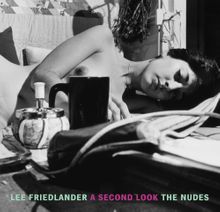 Lee Friedlander The Nudes
Lee Friedlander The Nudes
A Second Look
Published by D.A.P./Distributed Art Publishers.
Lee Friedlander (born 1934) first came to public attention in the landmark exhibition New Documents, at The Museum of Modern Art, New York, in 1967. More than 40 books about his work have been published since the early 1970s, including Self-Portrait, Sticks and Stones, Cherry Blossom Time in Japan, Family, America by Car, People at Work, The New Cars 1964 and Mannequin. His career was the focus of a major traveling retrospective organized by The Museum of Modern Art in 2005.
PUBLISHER
D.A.P./Distributed Art Publishers
BOOK FORMAT
Hardcover, 11 x 9.75 in. / 168 pgs / 84 duotone.
PUBLISHING STATUS
Pub Date 3/31/2013
Out of print
DISTRIBUTION
D.A.P. Exclusive
Catalog: SPRING 2013 p. 21
PRODUCT DETAILS
ISBN 9781938922008 TRADE
List Price: $24.95 CAD $27.50
AVAILABILITY
Not available
STATUS: Out of print | 00/00/00 For assistance locating a copy, please see our list of recommended out of print specialists |
 Lee Friedlander: Mannequin
Lee Friedlander: Mannequin
Published by Fraenkel Gallery.
Lee Friedlander (born 1934) first came to public attention in the landmark exhibition New Documents, at The Museum of Modern Art, New York, in 1967. The range of his work since then—including portraits, nudes, still lifes and studies of people at work—is anchored in a uniquely vivid and far-reaching vision of the american scene. More than 40 books about his work have been published since the early 1970s, including Self-Portrait, Sticks and Stones, Cherry Blossom Time in Japan, Family, America by Car, People at Work and The New Cars 1964. His career was the focus of a major traveling retrospective organized by The Museum of Modern Art in 2005. His work can be found in depth in the collections of The Museum of Modern Art, the Metropolitan Museum of Art, the San Francisco Museum of Art and the National Gallery of Art, among many others.
PUBLISHER
Fraenkel Gallery
BOOK FORMAT
Hardcover, 9 x 13 in. / 112 pgs / 103 duotone.
PUBLISHING STATUS
Pub Date 7/31/2012
Active
DISTRIBUTION
D.A.P. Exclusive
Catalog: FALL 2012 p. 22
PRODUCT DETAILS
ISBN 9781881337324 TRADE
List Price: $49.95 CAD $67.50 GBP £44.99
AVAILABILITY
Out of stock
STATUS: Out of stock Temporarily out of stock pending additional inventory. |
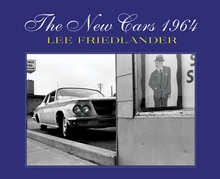 Lee Friedlander: The New Cars 1964
Lee Friedlander: The New Cars 1964
Published by Fraenkel Gallery.
Introduction by Jeffrey Fraenkel.
PUBLISHER
Fraenkel Gallery
BOOK FORMAT
Hardcover, 12 x 9.75 in. / 72 pgs / 3 color / 33 bw.
PUBLISHING STATUS
Pub Date 9/30/2011
Out of stock indefinitely
DISTRIBUTION
D.A.P. Exclusive
Catalog: FALL 2011 p. 177
PRODUCT DETAILS
ISBN 9781881337317 TRADE
List Price: $49.95 CAD $67.50 GBP £44.99
AVAILABILITY
Not available
STATUS: Out of stock indefinitely. |
 Lee Friedlander: Recent Western Landscape 2008-09
Lee Friedlander: Recent Western Landscape 2008-09
Published by Mary Boone Gallery.
Text by Klaus Kertess.
PUBLISHER
Mary Boone Gallery
BOOK FORMAT
Clth, 12 x 12.75 in. / 30 pgs / 25 duotone / limited edition of 600 copies.
PUBLISHING STATUS
Pub Date 8/31/2011
Out of stock indefinitely
DISTRIBUTION
D.A.P. Exclusive
Catalog: SPRING 2011 p. 124
PRODUCT DETAILS
ISBN 9780980171532 TRADE
List Price: $125.00 CAD $150.00
AVAILABILITY
Not available
STATUS: Out of stock indefinitely. |
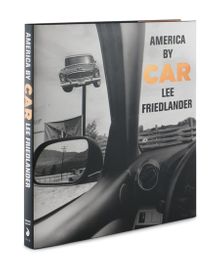 Lee Friedlander: America by Car
Lee Friedlander: America by Car
LIMITED EDITION
Published by D.A.P./Fraenkel Gallery.
PUBLISHER
D.A.P./Fraenkel Gallery
BOOK FORMAT
Clth, 13.5 x 15 in. / 200 pgs / 190 duotone.
PUBLISHING STATUS
Pub Date 6/30/2010
Active
DISTRIBUTION
D.A.P. Exclusive
Catalog: SPRING 2010 p. 21
PRODUCT DETAILS
ISBN 9781935202080 SDNR40
List Price: $225.00 CAD $335.00 GBP £200.00
AVAILABILITY
In stock
in stock $225.00 Free Shipping UPS GROUND IN THE CONTINENTAL U.S. |
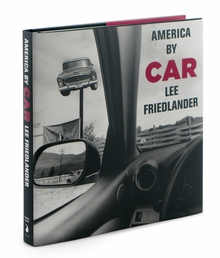 Lee Friedlander: America by Car
Lee Friedlander: America by Car
Published by D.A.P./Fraenkel Gallery.
PUBLISHER
BOOK FORMAT
Clth, 9.5 x 9.5 in. / 200 pgs / 190 duotone.
PUBLISHING STATUS
Pub Date 7/31/2010
Out of stock indefinitely
DISTRIBUTION
D.A.P. Exclusive
Catalog: SPRING 2010 p. 177
PRODUCT DETAILS
ISBN 9781935202073 TRADE
List Price: $49.95 CAD $67.50 GBP £44.99
AVAILABILITY
Not available
STATUS: Out of stock indefinitely. |
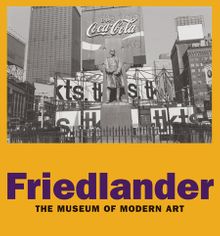 Friedlander
Friedlander
Published by The Museum of Modern Art, New York.
Text by Peter Galassi. Afterword by Richard Benson.
Now available for the first time--the paperback edition of this definitive, comprehensive volume is being published to coincide with the traveling retrospective's stop in San Francisco at SFMOMA. At 480 pages, Friedlander includes more than 750 photographs--770 duotone and 33 color--grouped by series, as well as the incisive, aforementioned essay by Peter Galassi and an afterword by Richard Benson.
PUBLISHER
The Museum of Modern Art, New York
BOOK FORMAT
Paperback, 12 x 13 in./ 480 pgs / 33 color / 770 duotone
PUBLISHING STATUS
Pub Date 8/31/2009
Out of stock indefinitely
DISTRIBUTION
D.A.P. Exclusive
Catalog: SPRING 2008 p. 44
PRODUCT DETAILS
ISBN 9780870703447 TRADE
List Price: $60.00 CAD $70.00
AVAILABILITY
Not available
STATUS: Out of stock indefinitely. |
 Lee Friedlander: Photographs Frederick Law Olmsted Landscapes
Lee Friedlander: Photographs Frederick Law Olmsted Landscapes
Published by D.A.P./Distributed Art Publishers.
Text by Lee Friedlander.
This stunning collection of rich tritones celebrates the complex, idiosyncratic picture-making of one of the country's greatest living photographers, and also arrives upon the 150 year anniversary of Olmsted's 1858 design for Central Park. Rambling across bridges and through open meadows and dense undergrowth, Friedlander locates a pure pleasure in Olmsted's designs--in the meticulous stonework, the balance of exposure to shade and in the mature, weather-beaten trees that attest to the durability of Olmsted's vision.
PUBLISHER
D.A.P./Distributed Art Publishers
BOOK FORMAT
Clothbound, 13 x 12.75 in. / 84 pgs / 89 tritone.
PUBLISHING STATUS
Pub Date 2/1/2008
Out of print
DISTRIBUTION
D.A.P. Exclusive
Catalog: SPRING 2008 p. 6
PRODUCT DETAILS
ISBN 9781933045733 TRADE
List Price: $85.00 CAD $100.00
AVAILABILITY
Not available
STATUS: Out of print | 00/00/00 For assistance locating a copy, please see our list of recommended out of print specialists |
 Lee Friedlander: Cherry Blossom Time in Japan
Lee Friedlander: Cherry Blossom Time in Japan
The Complete Works
Published by Fraenkel Gallery.
PUBLISHER
Fraenkel Gallery
BOOK FORMAT
Hardcover, 8 x 11 in. / 156 pgs / 73 bw.
PUBLISHING STATUS
Pub Date 9/1/2006
No longer our product
DISTRIBUTION
D.A.P. Exclusive
Catalog: SPRING 2007 p. 104
PRODUCT DETAILS
ISBN 9781881337201 TRADE
List Price: $65.00 CAD $75.00
AVAILABILITY
Not available
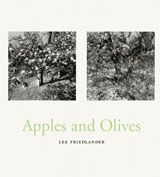 Lee Friedlander: Apples & Olives
Lee Friedlander: Apples & Olives
Published by Fraenkel Gallery/Hasselblad Foundation.
Photographs by Lee Friedlander.
PUBLISHER
Fraenkel Gallery/Hasselblad Foundation
BOOK FORMAT
Hardcover, 9.75 x 10.25 in. / 64 pgs / 55 tritone.
PUBLISHING STATUS
Pub Date 10/15/2005
Out of print
DISTRIBUTION
D.A.P. Exclusive
Catalog: SPRING 2006 p. 14
PRODUCT DETAILS
ISBN 9781933045320 TRADE
List Price: $45.00 CAD $55.00
AVAILABILITY
Not available
STATUS: Out of print | 00/00/00 For assistance locating a copy, please see our list of recommended out of print specialists |
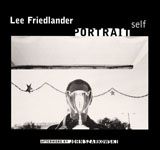 Lee Friedlander: Self Portrait
Lee Friedlander: Self Portrait
Published by The Museum of Modern Art, New York.
Afterword by John Szarkowski.
PUBLISHER
The Museum of Modern Art, New York
BOOK FORMAT
Paperback, 9 x 11.25 in. / 250 pgs / 150 color / 50 bw.
PUBLISHING STATUS
Pub Date 6/15/2005
Out of stock indefinitely
DISTRIBUTION
D.A.P. Exclusive
Catalog: SPRING 2005 p. 6
PRODUCT DETAILS
ISBN 9780870703386 TRADE
List Price: $34.95 CAD $40.00
AVAILABILITY
Not available
STATUS: Out of stock indefinitely. |
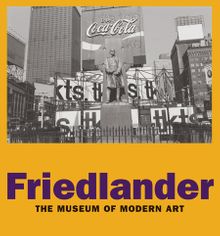 Friedlander
Friedlander
Published by The Museum of Modern Art, New York.
Essay by Peter Galassi. Afterword by Richard Benson.
PUBLISHER
The Museum of Modern Art, New York
BOOK FORMAT
Hardcover, 11 x 12 in. / 504 pgs / 25 color / 825 duotone.
PUBLISHING STATUS
Pub Date 6/15/2005
Out of stock indefinitely
DISTRIBUTION
D.A.P. Exclusive
Catalog: SPRING 2005 p. 7
PRODUCT DETAILS
ISBN 9780870703430 TRADE
List Price: $75.00 CAD $99.00
AVAILABILITY
Not available
STATUS: Out of stock indefinitely. |
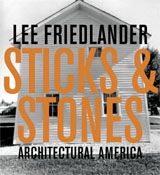 Lee Friedlander: Sticks & Stones
Lee Friedlander: Sticks & Stones
Architectural America
Published by D.A.P./Fraenkel Gallery.
Essays by James Enyeart.
PUBLISHER
BOOK FORMAT
Clothbound, 11.75 x 12.75 in. / 216 pgs / 192 duotone.
PUBLISHING STATUS
Pub Date 10/2/2004
Out of stock indefinitely
DISTRIBUTION
D.A.P. Exclusive
Catalog: FALL 2004
PRODUCT DETAILS
ISBN 9781891024979 TRADE
List Price: $85.00 CAD $112.50 GBP £75.00
AVAILABILITY
Not available
STATUS: Out of stock indefinitely. |
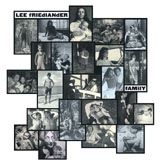 Lee Friedlander: Family
Lee Friedlander: Family
Published by Fraenkel Gallery.
Foreword by Maria Friedlander.
PUBLISHER
Fraenkel Gallery
BOOK FORMAT
Hardcover, 10 x 10.25 in. / 144 pgs / 192 duotone
PUBLISHING STATUS
Pub Date 5/2/2004
Out of print
DISTRIBUTION
D.A.P. Exclusive
Catalog: FALL 2004
PRODUCT DETAILS
ISBN 9781881337188 TRADE
List Price: $40.00 CAD $50.00
AVAILABILITY
Not available
STATUS: Out of print | 6/1/2005 For assistance locating a copy, please see our list of recommended out of print specialists |
 Lee Friedlander: Stems
Lee Friedlander: Stems
Published by D.A.P./Distributed Art Publishers.
Photographs by Lee Friedlander.
PUBLISHER
D.A.P./Distributed Art Publishers
BOOK FORMAT
Hardcover, 10 x 12 in. / 96 pgs / 66 tritone.
PUBLISHING STATUS
Pub Date 8/2/2003
Out of print
DISTRIBUTION
D.A.P. Exclusive
Catalog: FALL 2003
PRODUCT DETAILS
ISBN 9781891024757 TRADE
List Price: $85.00 CAD $112.50 GBP £75.00
AVAILABILITY
Not available
STATUS: Out of print | 00/00/00 For assistance locating a copy, please see our list of recommended out of print specialists |
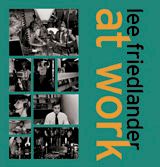 Lee Friedlander At Work
Lee Friedlander At Work
Published by D.A.P./Distributed Art Publishers.
Essay by Richard Benson.
PUBLISHER
D.A.P./Distributed Art Publishers
BOOK FORMAT
Hardcover, 11.5 x 12 in. / 96 pgs / 231 duotone.
PUBLISHING STATUS
Pub Date 8/2/2002
Out of print
DISTRIBUTION
D.A.P. Exclusive
Catalog: FALL 2002
PRODUCT DETAILS
ISBN 9781891024481 TRADE
List Price: $55.00 CAD $65.00
AVAILABILITY
Not available
STATUS: Out of print | 00/00/00 For assistance locating a copy, please see our list of recommended out of print specialists |
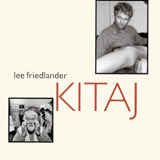 Lee Friedlander: Kitaj
Lee Friedlander: Kitaj
Published by Fraenkel Gallery.
Introduction by Maria Friedlander. Afterword by R.B. Kitaj.
PUBLISHER
Fraenkel Gallery
BOOK FORMAT
Hardcover, 9.5 x 9.5 in. / 120 pgs / 96 duotone
PUBLISHING STATUS
Pub Date 3/2/2002
Out of print
DISTRIBUTION
D.A.P. Exclusive
Catalog: SPRING 2002
PRODUCT DETAILS
ISBN 9781881337157 TRADE
List Price: $45.00 CAD $55.00
AVAILABILITY
Not available
STATUS: Out of print | 4/23/2003 For assistance locating a copy, please see our list of recommended out of print specialists |
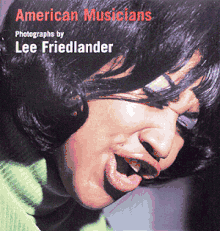 Lee Friedlander: American Musicians
Lee Friedlander: American Musicians
Signed Edition
Published by D.A.P./Distributed Art Publishers.
Foreword by Joel Dorn.Interviews with Ruth Brown and Steve Lacy.
In the 1950s Lee Friedlander arrived in New York and began work as a house photographer for Atlantic Records. Over the next two decades, he would create some of their most famous album covers, and his picture style -- including portraits of Ray Charles, Aretha Franklin, Ruth Brown, Charles Mingus, John Coltrane, the Modern Jazz Quartet, and countless others -- became forever associated with that golden era of American music. This book is Friedlander's tribute to the great musicians of the post-war years. It includes work from his trips through the Deep South, where he met Delta Blues musicians like Mississippi Fred McDowell, New Orleans marching bands and Nashville performers such as Johnny Cash, the Carter Sisters and Flatt & Scruggs. There are photographs of unknown bluegrass guitarists in Appalachia, photographs from tours with Count Bassie's Orchestra, and images of Jazz geniuses like Thelonius Monk, Duke Ellington, Ornette Coleman and Yusef Lateef. Interviews by Friedlander with R&B legend Ruth Brown and modern jazz pioneer Steve Lacy are included along with an introduction by music impresario Joel Dorn.
PUBLISHER
D.A.P./Distributed Art Publishers
BOOK FORMAT
Hardcover, 9.25 x 10 in. / 272 pgs / 243 color / 276 duotone
PUBLISHING STATUS
Pub Date 12/2/2001
Out of print
DISTRIBUTION
D.A.P. Exclusive
Catalog: FALL 2001
PRODUCT DETAILS
ISBN 9781891024412 SDNR30
List Price: $75.00 CAD $90.00
AVAILABILITY
Not available
STATUS: Out of print | 6/1/2005 For assistance locating a copy, please see our list of recommended out of print specialists |
 Lee Friedlander: American Musicians
Lee Friedlander: American Musicians
Published by D.A.P./Distributed Art Publishers.
Foreword by Joel Dorn.Interviews with Ruth Brown and Steve Lacy.
PUBLISHER
D.A.P./Distributed Art Publishers
BOOK FORMAT
Paperback, 9.25 x 10 in. / 272 pgs / 243 color / 276 duotone.
PUBLISHING STATUS
Pub Date 10/2/2001
Out of stock indefinitely
DISTRIBUTION
D.A.P. Exclusive
Catalog: FALL 2001
PRODUCT DETAILS
ISBN 9781891024337 TRADE
List Price: $35.00 CAD $47.50 GBP £30.00
AVAILABILITY
Not available
STATUS: Out of stock indefinitely. |
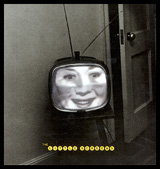 Lee Friedlander: The Little Screens
Lee Friedlander: The Little Screens
Published by Fraenkel Gallery.
Foreword by Walker Evans.
PUBLISHER
Fraenkel Gallery
BOOK FORMAT
Hardcover, 9.5 x 9.5 in. / 96 pgs / 34 duotone
PUBLISHING STATUS
Pub Date 9/2/2001
No longer our product
DISTRIBUTION
D.A.P. Exclusive
Catalog: FALL 2001
PRODUCT DETAILS
ISBN 9781881337119 TRADE
List Price: $45.00 CAD $55.00
AVAILABILITY
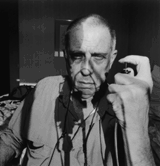 Lee Friedlander
Lee Friedlander
Published by D.A.P./Fraenkel Gallery.
Photographs by Lee Friedlander.
PUBLISHER
D.A.P./Fraenkel Gallery
BOOK FORMAT
Paperback, 9 x 9.25 in. / 96 pgs / 77 duotone.
PUBLISHING STATUS
Pub Date 5/2/2000
Out of stock indefinitely
DISTRIBUTION
D.A.P. Exclusive
Catalog: SPRING 2000
PRODUCT DETAILS
ISBN 9781891024191 TRADE
List Price: $35.00 CAD $47.50 GBP £30.00
AVAILABILITY
Not available
STATUS: Out of stock indefinitely. |
PUBLISHER
Fraenkel Gallery
BOOK FORMAT
Hardcover, 9 x 9.25 / 82 pgs / 77 duotone
PUBLISHING STATUS
Pub Date 5/2/2000
Out of print
DISTRIBUTION
D.A.P. Exclusive
Catalog: SPRING 2000
PRODUCT DETAILS
ISBN 9781881337096 SDNR30
List Price: $75.00 CAD $90.00
AVAILABILITY
Not available
STATUS: Out of print | 6/1/2005 For assistance locating a copy, please see our list of recommended out of print specialists |
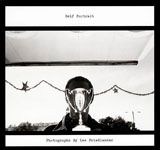 Lee Friedlander: Self Portrait
Lee Friedlander: Self Portrait
Published by D.A.P./Fraenkel Gallery.
Photographs by Lee Friedlander. Text by John Szarkowski.
PUBLISHER
D.A.P./Fraenkel Gallery
BOOK FORMAT
Paperback, 10 x 9.5 in. / 96 pgs / 49 duotone
PUBLISHING STATUS
Pub Date 5/2/1998
No longer our product
DISTRIBUTION
D.A.P. Exclusive
Catalog: SPRING 1998
PRODUCT DETAILS
ISBN 9781881616962 TRADE
List Price: $35.00 CAD $40.00
AVAILABILITY
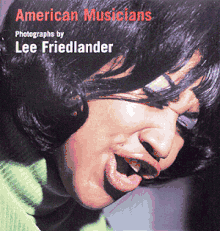 American Musicians
American Musicians
Photographs by Lee Friedlander
Published by D.A.P./Distributed Art Publishers.
Photographs by Lee Friedlander. Contributions by Ruth Brown, Steve Lacy, Joel Dorn.
"...an irresistible appeal... a new and exciting understanding of Friedlander, one of our most important contemporary photographers."--Andy Grundberg, The New York Times Book Review.
"This informail but vast [book] -- 514 images! -- may be the best look yet at a half century of American music... Few labors of loves ever paid off so handsomely."--Malcolm Jones, Jr., Newsweek.
"The sheer breadth of American Musicicians puts it in a class by itself."--Jason Berry, Chicago Tribune.
PUBLISHER
D.A.P./Distributed Art Publishers
BOOK FORMAT
Hardcover, 9.3 x 10 in. / 272 pgs / 243 color / 276 duotone
PUBLISHING STATUS
Pub Date 10/2/1998
Out of print
DISTRIBUTION
D.A.P. Exclusive
Catalog: FALL 1998
PRODUCT DETAILS
ISBN 9781564660565 TRADE
List Price: $49.95 CAD $60.00
AVAILABILITY
Not available
STATUS: Out of print | 12/19/2005 For assistance locating a copy, please see our list of recommended out of print specialists |
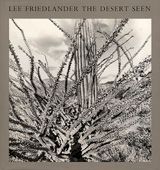 Lee Friedlander: The Desert Seen
Lee Friedlander: The Desert Seen
Published by D.A.P./Distributed Art Publishers.
Photographs by Lee Friedlander.
PUBLISHER
D.A.P./Distributed Art Publishers
BOOK FORMAT
Hardcover, 11.5 x 12 in. / 108 pgs / 94 tritone.
PUBLISHING STATUS
Pub Date 9/2/1996
Out of stock indefinitely
DISTRIBUTION
D.A.P. Exclusive
Catalog: FALL 1996
PRODUCT DETAILS
ISBN 9781881616757 TRADE
List Price: $75.00 CAD $99.00 GBP £65.00
AVAILABILITY
Not available
STATUS: Out of stock indefinitely. |
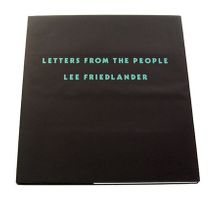 Lee Friedlander: Letters From The People
Lee Friedlander: Letters From The People
Published by D.A.P./Distributed Art Publishers.
Photographs by Lee Friedlander.
PUBLISHER
D.A.P./Distributed Art Publishers
BOOK FORMAT
Hardcover, 13.75 x 14.5 in. / 88 pgs / 213 tritone.
PUBLISHING STATUS
Pub Date 10/2/1993
Out of print
DISTRIBUTION
D.A.P. Exclusive
Catalog: FALL 1993
PRODUCT DETAILS
ISBN 9781881616054 TRADE
List Price: $125.00 CAD $150.00
AVAILABILITY
Not available
STATUS: Out of print | 00/00/00 For assistance locating a copy, please see our list of recommended out of print specialists |
